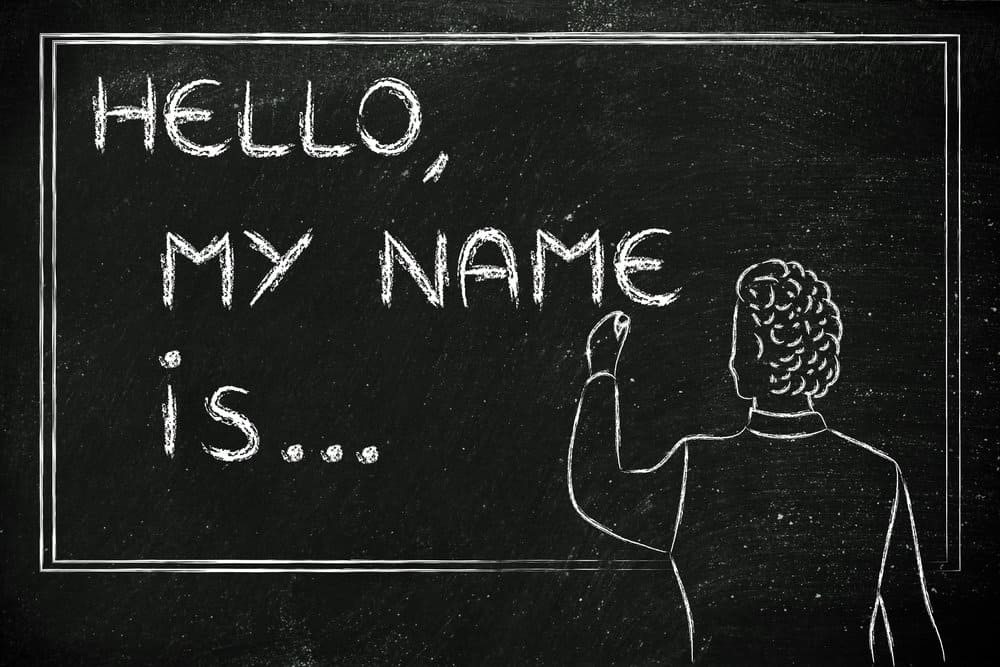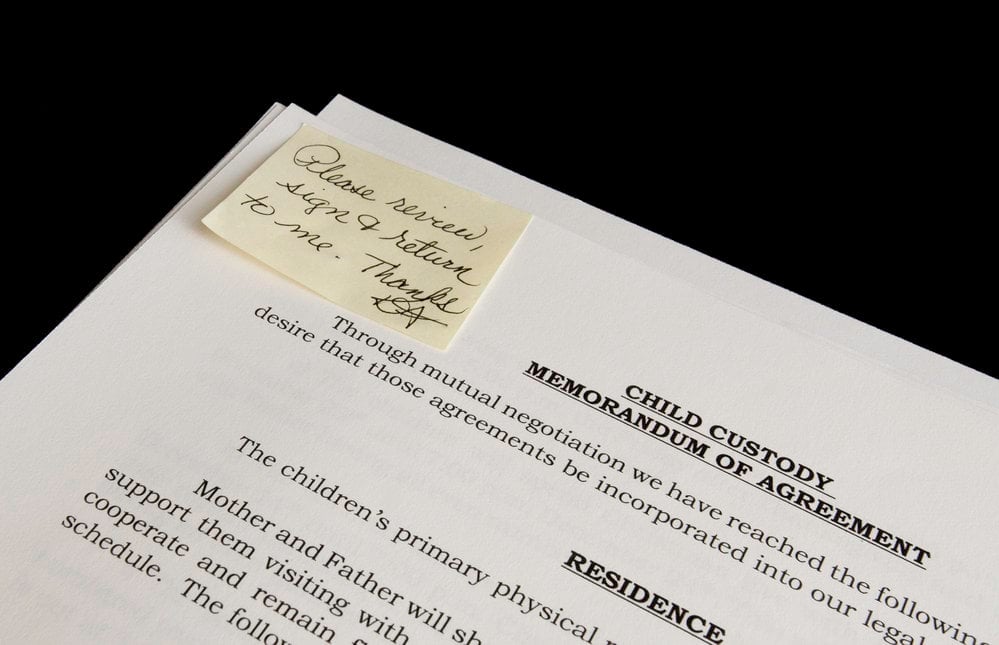Divorce can be challenging, often leading to significant changes in one’s life. One such change many individuals consider after a divorce is changing their name. This decision, while personal, can represent a fresh start and allow for a sense of closure.
In most cases, changing one’s name after divorce is relatively straightforward. However, several steps must be followed to ensure the new name is legally recognized. This article will provide essential information and guidance on changing your name after divorce, including the necessary paperwork, potential costs, and other factors to consider.
By understanding the procedures and requirements, individuals can navigate the name change process more easily and confidently, ensuring a successful transition into the next chapter of their lives.
Reasons for Name Change After Divorce
Changing one’s name after a divorce can be a deeply personal decision influenced by several factors. This section covers the most common reasons people choose to change their name following the end of their marriage.
Personal Preference
For many, reverting to their maiden name or using a new surname reclaims their identity after a divorce. This can be an essential step for those who feel disconnected from their married name or view it as a reminder of a difficult time in their lives. Changing one’s name can be empowering and an opportunity for personal growth.
Professional Reasons
Another reason people may choose to change their name after divorce is to maintain continuity in their professional lives. Sometimes, a person might have established a career under their married name and prefer to keep that name for professional purposes. Alternatively, an individual might revert to their maiden name or choose a different surname to avoid potential confusion or negative associations within their industry.
Starting a New Chapter
Embarking on a new chapter of life after a divorce can be an exciting time of personal transformation. For many, changing their name symbolizes leaving the past behind and embracing new beginnings. This change can be a significant step in creating a new life and identity separate from the one they had during their marriage.
Ultimately, deciding to change one’s name after a divorce is deeply personal. Each individual’s unique circumstances and feelings will dictate the path they choose to take. Whether for personal, professional, or symbolic reasons, changing one’s name can provide a renewed sense of confidence and identity.
Legal Process of Name Change
Changing your name after a divorce involves a legal process that includes petitioning the court, attending a hearing, and obtaining a court order. This section provides an overview of the steps you must take to change your name legally.
Petition for Name Change
The first step in the name change process is to file a petition with the appropriate court, typically the family court in your jurisdiction. The petition should include your personal information, reasons for the name change, and a statement that you are not requesting the change for fraudulent purposes. You may be required to provide documentation, such as:
- Birth certificate
- Social security card
- Proof of residency
- Divorce decree (if applicable)
Once you have completed the petition and submitted the required documents, the court will assign you a hearing date.
Attending the Hearing
A judge will review your petition and the supporting documents during the hearing. It’s essential to be well-prepared and bring any additional documentation the court may request. You may also be asked to testify why you seek the name change. During this time, you must clarify your reasons and demonstrate that you are not trying to avoid legal obligations or deceive anyone.
Obtaining a Court Order
If the judge is satisfied with your petition and your testimony, they will issue a court order that legally changes your name. You must keep this document as proof of your name change, as it will be required when updating essential records and identifications, such as your driver’s license, social security card, and bank accounts.
Following these steps and providing accurate information during the legal process should lead to a successful name change after your divorce. Consider local laws and requirements, as procedures may vary depending on your jurisdiction.
Updating Documents and Records
After a divorce, updating your documents and records to reflect your new name is crucial. This will ensure that your legal identity is accurate and up-to-date. The following subsections guide changing your name on key documents, such as your social security card, driver’s license, and passport.
Social Security Card
You must contact the Social Security Administration (SSA) to change the name on your social security card. Follow these steps:
- Complete the Application for a Social Security Card (Form SS-5).
- Provide proof of identity, such as a driver’s license or passport.
- Provide proof of your legal name change, such as a divorce decree.
- Submit your application and required documents by mail or at your local Social Security office.
Once your application is processed, you will receive your new social security card with your updated name.
Driver’s License
Updating your driver’s license varies by state, but the general process includes:
- Visit your local Department of Motor Vehicles (DMV) office.
- Complete the required form for a name change on your driver’s license.
- Provide proof of identity, such as your social security card or passport.
- Provide proof of your legal name change, such as a divorce decree.
- Pay the required fee, if applicable.
Upon completing these steps, you will receive your new driver’s license with your updated name.
Passport
Changing your name on your passport requires different steps depending on the age of your current passport:
- Less than one year old: Complete the U.S. Passport Re-Application Form (DS-5504) and submit it with your current passport, a color passport photo, and proof of your legal name change (such as a divorce decree).
- More than one year old: Complete the U.S. Passport Renewal Application (DS-82) and submit it with your current passport, a color passport photo, and proof of your legal name change (such as a divorce decree). A fee will apply.
Submit the required items by mail, and once processed, you will receive your new passport with your updated name.
Incorporating Name Change in Divorce Decree
When going through a divorce, many individuals consider changing their names. Incorporating the name change in the divorce decree can simplify the process and save time. This section will discuss the steps to ensure a smooth legal name change after divorce.
First, informing the attorney or judge handling the divorce case of your intentions is essential. They can guide the necessary paperwork and include this request in the divorce decree. This document plays a crucial role in verifying your legal name change, so it’s important to state the old and new names clearly.
Next, gather the required documents. These usually include:
- Original or certified copy of the divorce decree, with the name change provision
- Marriage certificate (if applicable)
- Birth certificate
- Photo identification (e.g., driver’s license, passport)
Once these documents are in order, submit them to the relevant authorities. This may involve visiting the Social Security office, DMV, and other government agencies. Be prepared to pay associated fees and follow any additional instructions for each agency.
Remember, changing one’s name after divorce is optional. Some individuals may keep their current name for professional, personal, or family reasons. In such cases, no action is necessary regarding the name change in the divorce decree.
Name Changes for Children and Step-Parents
When a divorce involves children and step-parents, changing names can become more complex. It is essential to consider the children’s best interests and any legal implications that may arise.
In some instances, a child might express the desire to have their last name changed after a divorce. This could be due to various reasons, such as wanting to share the same last name as the custodial parent or step-parent. However, changing a child’s name involves more than a personal preference. Legal procedures must be followed, and consent is generally required from both biological parents.
If the non-custodial parent does not agree to the name change, the custodial parent may need to file a petition in court, providing evidence of why the name change is in the child’s best interest. Factors the court may consider include:
- Reasons for the requested name change
- Impact of the change on the child’s relationship with both parents
- The child’s preference, if the child is old enough to express it
Step-parents can also play a significant role in a child’s life after a divorce. In certain cases, a step-parent may wish to adopt the child, which would legally change the child’s name to that of the step-parent. However, this process requires the consent of the non-custodial biological parent. If not granted, the step-parent must go through the legal process to prove the adoption is in the child’s best interest.
It is recommended to consult with a family law attorney when considering name changes for children and step-parents to ensure proper procedures are followed and the child’s best interests are protected.

Final Steps and Considerations
After the legal process of changing your name has been completed and you have received the necessary documents reflecting your new name, there are still some essential steps to take in fully adopting your new identity.
Updating Personal and Professional Contacts
Firstly, inform your personal and professional contacts about your new name. This can be done through various channels, including social networking sites, or directly contacting people through phone calls, emails, or physical letters. The following is a list of institutions and individuals that should be informed of your name change:
- Employers
- Banks and financial institutions
- Credit card companies
- Government agencies (e.g., Social Security Administration, Internal Revenue Service, and Department of Motor Vehicles)
- Insurance providers
- Doctors, dentists, and other healthcare providers
- Schools or universities
- Utility and service providers (e.g., electricity, water, cable TV, and phone)
It is essential to provide these entities with a copy of the legal documents that confirm your name change where required.
Adjusting to Your New Name
Once you have informed all relevant parties of your new name, adjusting to it personally and professionally is crucial. This may include practicing your new signature, adapting your resume and cover letters, and reintroducing yourself to colleagues and friends. This process will take time, but it is essential to embrace your new identity.
Keep in mind the importance of patience and communication during this period. People around you may become accustomed to addressing you by your new name. Be prepared to correct them if they inadvertently use your former name gently.
Frequently Asked Questions
How do I legally change my name after divorce?
To legally change your name after a divorce, you’ll need to obtain a certified copy of your divorce decree, including the court’s order for the name change. You can then use this document to update your name on various identification documents like your Social Security card, driver’s license, and passport.
Do I have to change my name back to my maiden name?
You are not required to change your name back to your maiden name after a divorce. It’s a personal decision based on your preferences and circumstances. Some choose to keep their married name for professional ties or their children’s sake.
How do I update my name on my identification documents?
You must contact the relevant agencies with a certified copy of your divorce decree to update your name on your identification documents. For instance:
- Social Security Administration: Visit your local office or follow the instructions on their website to update your Social Security card.
- Department of Motor Vehicles: Go to your local DMV office and bring your certified divorce decree, current driver’s license, and any additional documents your state requires.
- Passport: Follow the instructions on the U.S. Department of State’s website for updating your name on your passport. Keep in mind that fees may apply.
How long does changing my name after a divorce take?
Changing your name after divorce depends on various factors, such as the processing time of the agencies you’re dealing with and your location. Generally, it may take a few weeks to a few months for all your identification documents to be updated with your new name.
Can I change my name to something other than my maiden name?
Yes, you may be able to change your name to something other than your maiden name after a divorce. However, this might require filing a separate name change petition with the court and following the legal procedures outlined by your state. Consult an attorney or your local court clerk for guidance on this process.



